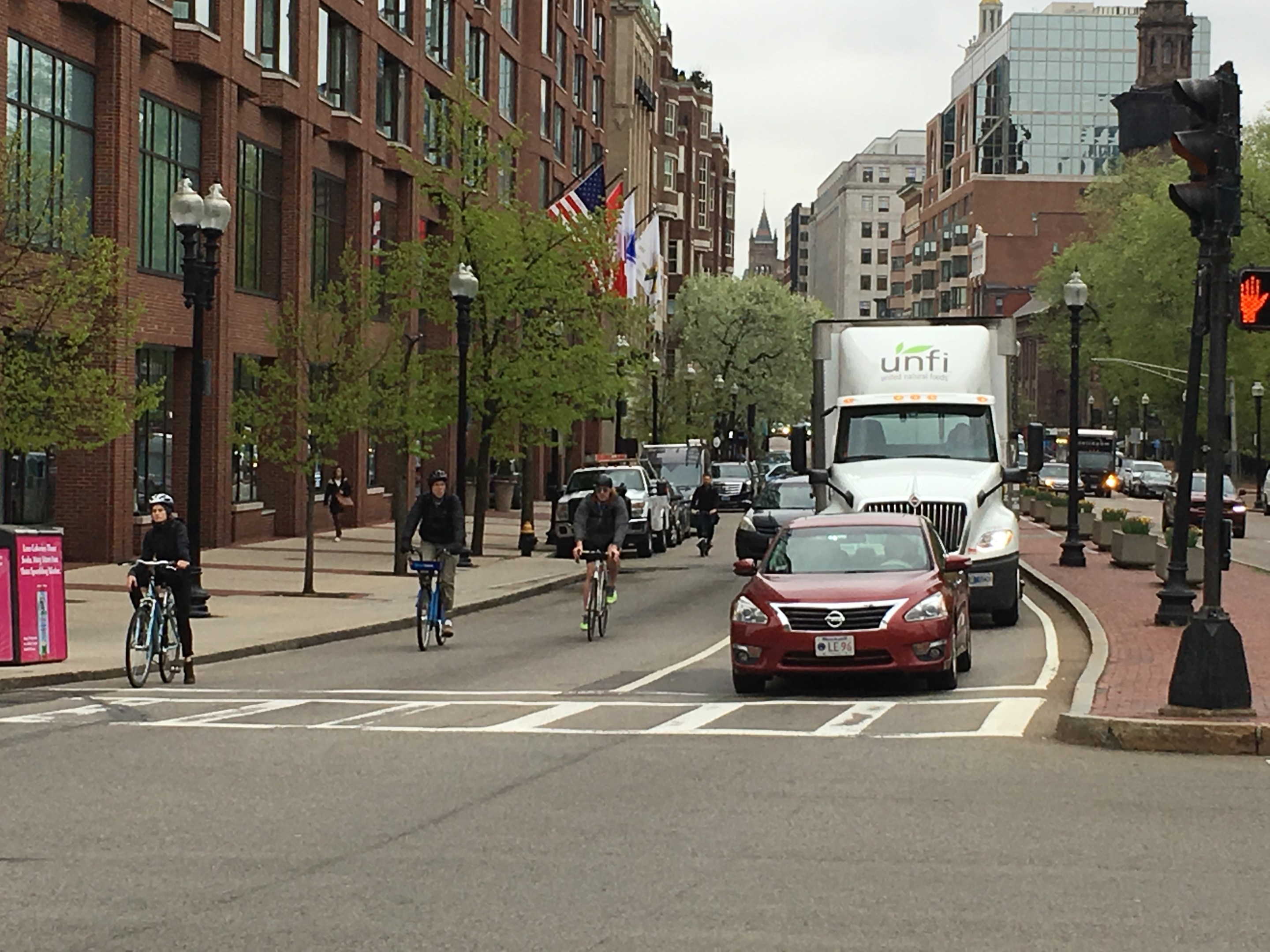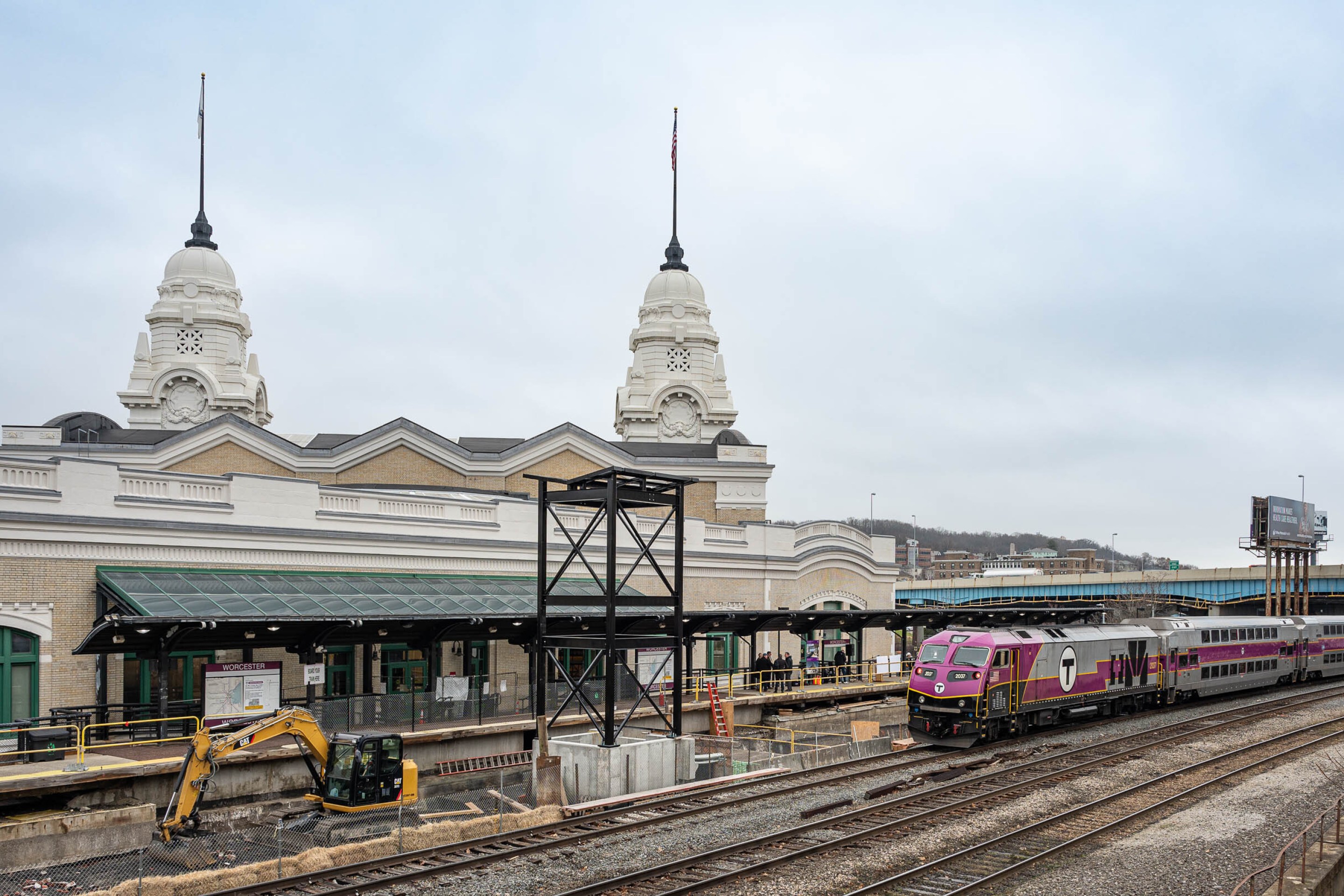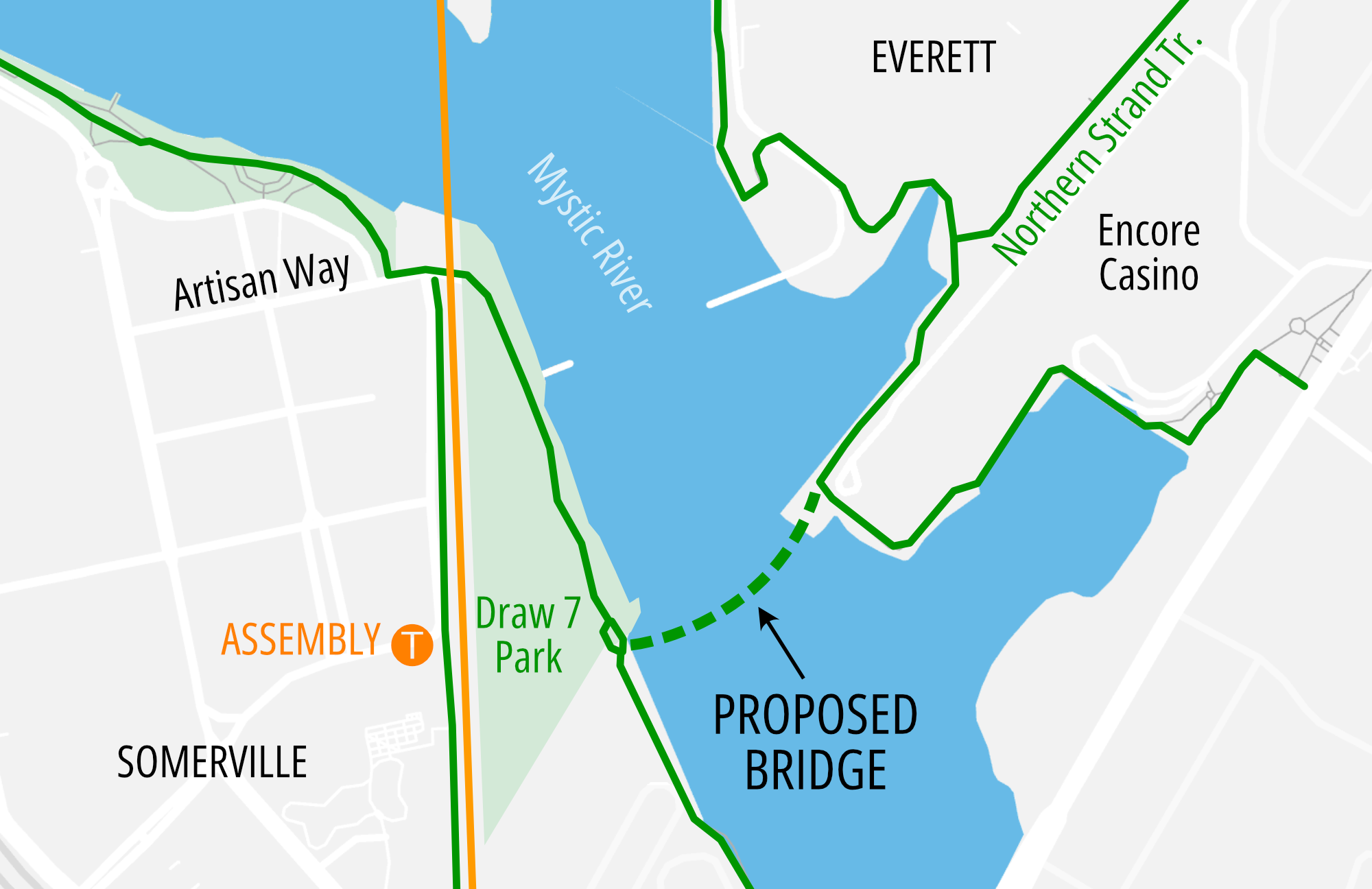As Governor Baker's administration prepares its phased reopening plan, ongoing physical distancing requirements present a stark choice for the region's political leaders: will people returning to work physically distance themselves in massive traffic jams, or will cities and towns give them they space they need to travel safely with widened sidewalks, protected bike routes, and less-crowded transit vehicles?
There are over 300,000 car-free households in Massachusetts, and public officials expect that many of them are unlikely to return to public transit as they return to work and the errands of daily life.
Earlier this month, in a budget discussion, the MBTA shared internal forecasts that predict that transit ridership will remain around one-tenth of previous levels throughout the rest of 2020, even as the agency restores regular service to facilitate physical distancing.
Public officials have so far offered no comprehensive strategies for alternatives to public transit as more Bay Staters begin returning to work. But several points of evidence suggest that people could be walking and biking in much greater numbers in the coming months.
“We’re seeing tons of new customers who haven’t ridden a bike in years, and also a huge number of people who’ve never been to our stores before,” says Mark Vautour, the store manager for Landry's Bicycles in Boston. “There are people whose gym memberships have been cancelled, so they’re using the bike as exercise; and there are people who are afraid to get on the train.”
Vautour also reported that there's been an industry-wide shortage of entry-level bikes this spring as demand surges.
"If you walked in right now, I would not be able to sell you a new hybrid bike – every $400 bike in the universe has been sold.”
In London, England, planners recently prepared new transportation forecasts that predict a huge shift from public transit to walking and bicycling this summer. Those models suggest that there could be ten times as much bike traffic and five times as much pedestrian traffic, compared to pre-pandemic levels.
The U.K. government announced last Friday that it would spend $2.5 billion to boost cycling and walking in the coming weeks with "pop-up bike lanes with protected space for cycling, wider pavements, safer junctions, and cycle and bus-only corridors," according to a government press release.
Local officials around the region are beginning to initiate similar conversations about how local streets can better support safer travel for people walking and biking.
Last month, officials in Brookline quickly implemented changes to several major streets to give pedestrians more space on sidewalks near grocery stores and on major walking routes to the hospitals of the Longwood Medical Area.
Boston city councilors and Boston Transportation Department officials are expected to discuss similar ideas in a public hearing scheduled for this evening.
"We have this time to look at (our streets) with no traffic, so what is going to be our response?" asked Councilor Lydia Edwards of East Boston last week, during a City Council hearing on the Mayor's proposed transportation budget for 2021. "It can’t be that a pandemic is the only way to reduce traffic.”
At the same budget hearing, Boston's Chief of Streets, Chris Osgood, told City Councilors that the proposed budget would support the continued expansion of the Bluebikes system into new neighborhoods. Osgood also alluded to plans for "accelerated build out of key (bike) corridors like the Mass. Ave. South project," which would link Dorchester and the Boston Medical Center campus while also improving safety on one of the city's most dangerous streets.
Other Boston Transportation Department officials have confirmed that the agency has also been collaborating with the MBTA and participating in a transportation working group within the Governor's reopening advisory board.
For the time being, the lack of traffic on the streets seems to be enough to encourage people to dig their out old bikes out of storage.
"The first thing I tell (new customers) is there’s been no better time to ride a bike, because there’s no cars," says Vautour.





